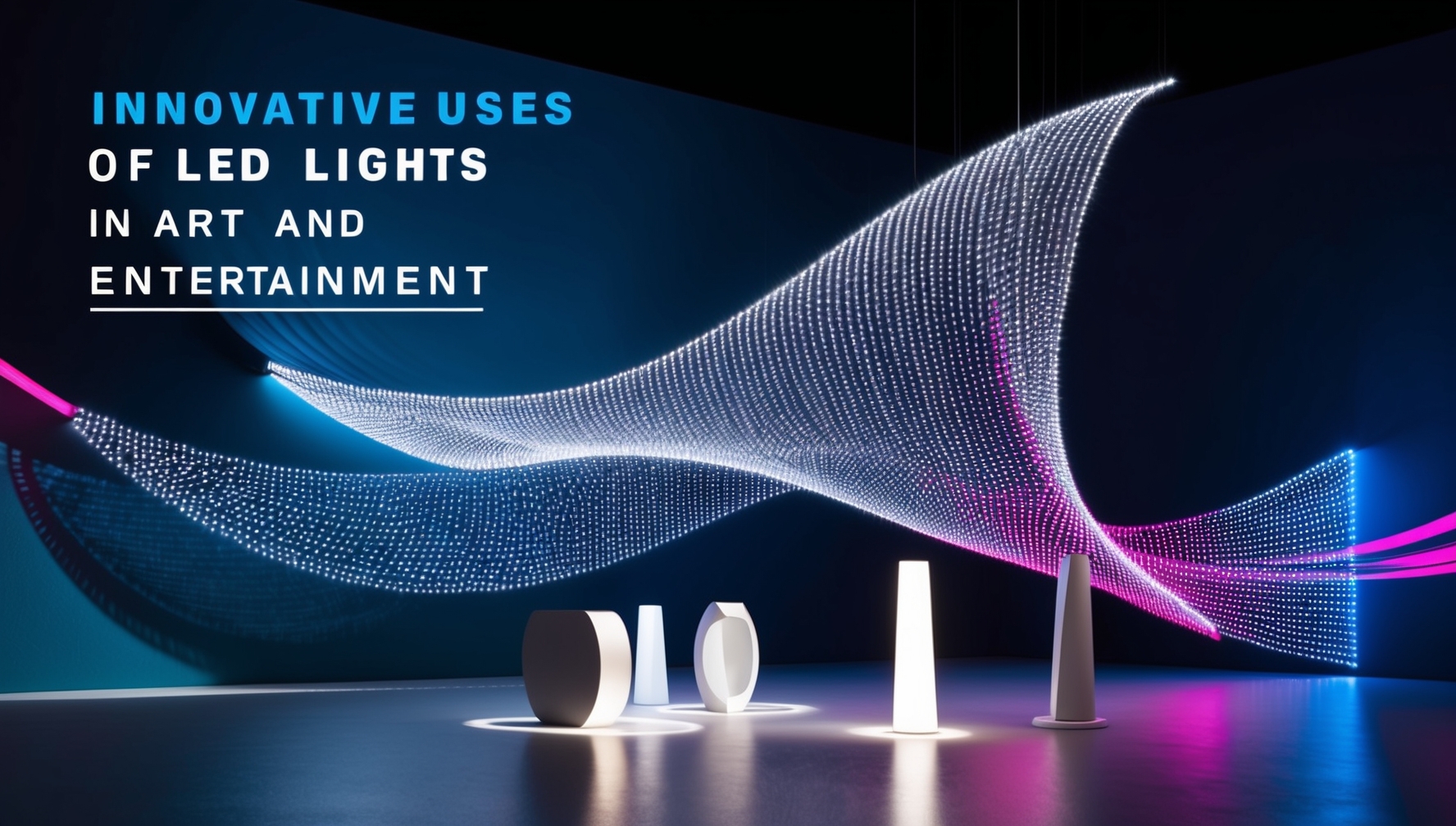LED lights have transformed the fields of art and entertainment, offering new possibilities for creative expression and audience engagement. Their versatility, energy efficiency, and dynamic capabilities have led to groundbreaking applications that push the boundaries of traditional lighting. This article explores some of the most innovative uses of LED lights in art and entertainment, highlighting how they are reshaping these industries.
Interactive Art Installations
LED technology has revolutionized interactive art installations by allowing artists to create immersive experiences that engage viewers in novel ways. LED lights can be programmed to respond to various stimuli, such as motion, sound, or touch, enabling dynamic and interactive exhibits.
Responsive Light Art
Artists use LEDs to create light installations that react to the presence and movements of viewers. For example, a light installation might change color or pattern based on the viewer’s position or movement within the space. This interactivity creates a unique and personalized experience for each audience member, making the art more engaging and memorable.
Data-Driven Art
LED lights can also be employed in art installations that visualize data. By converting data into light patterns or colors, artists can create visually compelling representations of information, such as weather data, social media trends, or environmental statistics. These data-driven art pieces offer a new way to interpret and interact with information through light.
Theatrical and Stage Lighting
In the realm of theater and live performances, LED lighting has become an essential tool for creating dramatic and visually stunning effects. The ability to control color, intensity, and movement with precision enhances the overall production value and allows for more creative expression.
Dynamic Stage Effects
LED lights are used to produce a wide range of effects on stage, including color-changing backdrops, moving light patterns, and dazzling light displays. These effects help set the mood, highlight key moments, and create visually impressive scenes that captivate audiences. The flexibility of LED lighting systems enables quick adjustments and complex choreography, making them ideal for dynamic and high-energy performances.
Low Heat and Energy Efficiency
Traditional stage lighting often generates significant heat, which can be uncomfortable for performers and require additional cooling equipment. LED lights, on the other hand, produce very little heat and consume less power. This efficiency reduces the strain on HVAC systems, lowers energy costs, and enhances the comfort of performers and crew.
Architectural Lighting and Light Sculptures
LED technology has also made its mark in architectural lighting and light sculptures, transforming buildings and public spaces into works of art. By integrating LEDs into architectural features, designers can create striking visual displays that enhance the aesthetic appeal of structures and public spaces.
Building Facades and Landmarks
Many cities now feature illuminated building facades and landmarks that use LED lights to create stunning visual effects. LED outdoor and landscape lighting solutions are also increasingly employed to highlight pathways, gardens, and other exterior features, creating a cohesive and immersive experience for residents and visitors alike. From changing colors to intricate patterns, these lighting installations highlight architectural details and contribute to the city’s nighttime ambiance. Iconic landmarks often use LED lighting to celebrate special events, holidays, or cultural milestones, creating memorable experiences for residents and visitors.
Light Sculptures
LED lights are also used in outdoor and indoor light sculptures, where they contribute to the creation of large-scale, illuminated art pieces. These sculptures can take various forms, from abstract designs to representational figures, and can be displayed in galleries, parks, or public squares. The flexibility of LED lighting allows artists to experiment with different shapes, colors, and effects, resulting in innovative and eye-catching creations.
Music and Performance Integration
In the world of music and performance, LED lights are used to create synchronized visual experiences that enhance the audience’s enjoyment and immersion. From concerts to dance performances, LEDs play a crucial role in complementing and amplifying the performance.
Concert Lighting
LED lighting is widely used in concerts to synchronize with music and create visually stimulating shows. Light shows that pulse, change colors, or create patterns in sync with the rhythm and beat of the music enhance the overall experience and create a more immersive atmosphere. This synchronization can be achieved through advanced lighting control systems and software that allow precise coordination between lights and music.
Dance and Performance Art
In dance and performance art, LED lights are often incorporated into costumes, props, and stage elements to create dynamic visual effects. For example, dancers might wear LED-illuminated costumes that light up or change colors in response to their movements. These effects add a new dimension to performances and create visually captivating experiences for the audience.
Augmented Reality and Virtual Experiences
The integration of LED lighting with augmented reality (AR) and virtual reality (VR) technologies is opening up new possibilities for art and entertainment. LED lights can enhance AR and VR experiences by providing realistic lighting effects and spatial cues that enhance immersion and realism.
Immersive VR Environments
In virtual reality environments, LED lighting can be used to simulate natural and artificial lighting effects, enhancing the sense of realism and depth. By accurately reproducing lighting conditions, VR experiences become more immersive and believable, allowing users to interact with virtual worlds in a more engaging way.
AR Art Exhibits
Augmented reality art exhibits use LED lights to create interactive and immersive displays that blend digital and physical elements. LEDs can be used to highlight AR content, create visual effects, or guide viewers through the exhibit, enhancing their overall experience and interaction with the art.
Conclusion: Illuminating Creativity and Innovation
LED lights have become a driving force behind innovation in art and entertainment, offering new opportunities for creative expression and audience engagement. Their versatility, efficiency, and dynamic capabilities enable artists and performers to explore new frontiers and create unforgettable experiences. As LED technology continues to evolve, its applications in various fields, from art and entertainment to automotive lighting, will likely expand, illuminating the future of creativity and innovation across industries.
